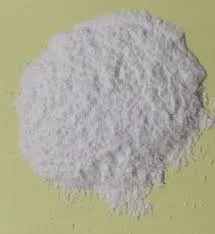- Afrikaans
- Albanian
- Amharic
- Arabic
- Armenian
- Azerbaijani
- Basque
- Belarusian
- Bengali
- Bosnian
- Bulgarian
- Catalan
- Cebuano
- Corsican
- Croatian
- Czech
- Danish
- Dutch
- English
- Esperanto
- Estonian
- Finnish
- French
- Frisian
- Galician
- Georgian
- German
- Greek
- Gujarati
- Haitian Creole
- hausa
- hawaiian
- Hebrew
- Hindi
- Miao
- Hungarian
- Icelandic
- igbo
- Indonesian
- irish
- Italian
- Japanese
- Javanese
- Kannada
- kazakh
- Khmer
- Rwandese
- Korean
- Kurdish
- Kyrgyz
- Lao
- Latin
- Latvian
- Lithuanian
- Luxembourgish
- Macedonian
- Malgashi
- Malay
- Malayalam
- Maltese
- Maori
- Marathi
- Mongolian
- Myanmar
- Nepali
- Norwegian
- Norwegian
- Occitan
- Pashto
- Persian
- Polish
- Portuguese
- Punjabi
- Romanian
- Russian
- Samoan
- Scottish Gaelic
- Serbian
- Sesotho
- Shona
- Sindhi
- Sinhala
- Slovak
- Slovenian
- Somali
- Spanish
- Sundanese
- Swahili
- Swedish
- Tagalog
- Tajik
- Tamil
- Tatar
- Telugu
- Thai
- Turkish
- Turkmen
- Ukrainian
- Urdu
- Uighur
- Uzbek
- Vietnamese
- Welsh
- Bantu
- Yiddish
- Yoruba
- Zulu
10 月 . 18, 2024 13:50 Back to list
Sodium Soluble Powder of Sulfaquinoxaline for Veterinary Use and Applications
Understanding Sulfaquinoxaline Sodium Soluble Powder An Overview
Sulfaquinoxaline is a sulfonamide antibiotic that has been widely used in veterinary medicine and some human applications. It falls under the class of drugs known as sulfa drugs, which have played a significant role in the treatment of bacterial infections. Sulfaquinoxaline sodium soluble powder is a formulation designed for easy incorporation into various solutions for effective administration, particularly in the treatment of coccidiosis and other infections in livestock and poultry.
Mechanism of Action
Sulfaquinoxaline works by inhibiting the synthesis of folic acid in bacteria, a vital nutrient for their growth and reproduction. By blocking the enzyme dihydropteroate synthase, it effectively prevents the bacterial cells from multiplying. This mechanism allows sulfaquinoxaline to target a wide range of gram-positive and gram-negative bacteria, making it a versatile agent in the veterinary arsenal. Importantly, it is not effective against viral infections or any other pathogens that do not require folic acid for their growth.
Uses in Veterinary Medicine
In veterinary medicine, sulfaquinoxaline is predominantly used to treat coccidiosis, a parasitic disease caused by protozoans of the genus Eimeria, which can have devastating effects on livestock and poultry, leading to severe economic losses. The disease is particularly prevalent in young animals and can result in clinical signs such as diarrhea, weight loss, and, in severe cases, death.
By utilizing sulfaquinoxaline sodium soluble powder, veterinarians can formulate medicated water or feed, ensuring that animals receive the correct dose and enhancing compliance
. The solubility of this powder allows for quick and efficient administration, promoting faster absorption and quicker therapeutic effects, which is critical in managing acute cases of coccidiosis.Dosage and Administration
sulfaquinoxaline sodium soluble powder

The dosing of sulfaquinoxaline sodium soluble powder depends on several factors, including the species of the animal, the severity of the condition being treated, and the specific formulation being used. Typically, veterinarians will prescribe treatment regimens that last from several days to weeks, depending on the response to therapy and any potential side effects.
It is crucial to follow prescribed dosages closely, as overdosing can lead to toxicity, while underdosing may result in treatment failure and resistance development. Farmers and veterinary practitioners must carefully monitor the health of treated animals and make adjustments as necessary based on their responses.
Safety and Side Effects
Generally, sulfaquinoxaline is considered safe for use in animals when administered correctly. However, like all medications, it can cause adverse effects. Common side effects may include gastrointestinal disturbances, such as diarrhea or nausea. More severe effects, albeit rarer, may include hypersensitivity reactions or alterations in blood cell counts.
It is essential to withdraw animals treated with sulfaquinoxaline from the food supply for a specified time to ensure that drug residues do not enter the human food chain, abiding by regulations set forth by health authorities. This precaution is vital to maintain food safety and public health.
Conclusion
Sulfaquinoxaline sodium soluble powder is a potent tool in veterinary medicine, particularly for managing coccidiosis and other bacterial infections in livestock and poultry. Its broad-spectrum activity and ease of administration make it an invaluable resource for veterinarians and farmers alike. However, it is imperative to adhere to prescribed dosages and withdrawal times to ensure the health and safety of both animals and the consumers of animal products. As antibiotic resistance becomes an increasingly pressing issue in both human and veterinary medicine, responsible use of medications like sulfaquinoxaline will be key to sustaining its efficacy in the future. By continuing to study and understand such drugs, we can work towards better health outcomes for animals and, consequently, for humans as well.
-
The Power of Radix Isatidis Extract for Your Health and Wellness
NewsOct.29,2024
-
Neomycin Sulfate Soluble Powder: A Versatile Solution for Pet Health
NewsOct.29,2024
-
Lincomycin Hydrochloride Soluble Powder – The Essential Solution
NewsOct.29,2024
-
Garamycin Gentamicin Sulfate for Effective Infection Control
NewsOct.29,2024
-
Doxycycline Hyclate Soluble Powder: Your Antibiotic Needs
NewsOct.29,2024
-
Tilmicosin Premix: The Ultimate Solution for Poultry Health
NewsOct.29,2024













